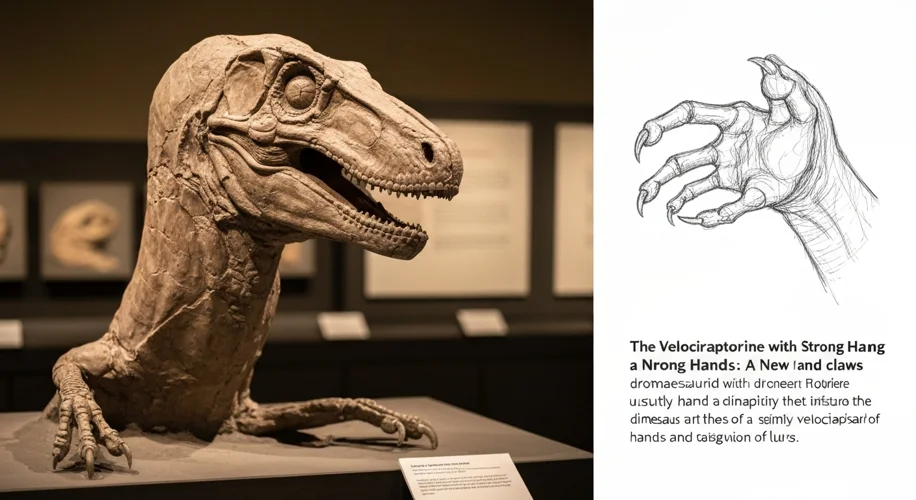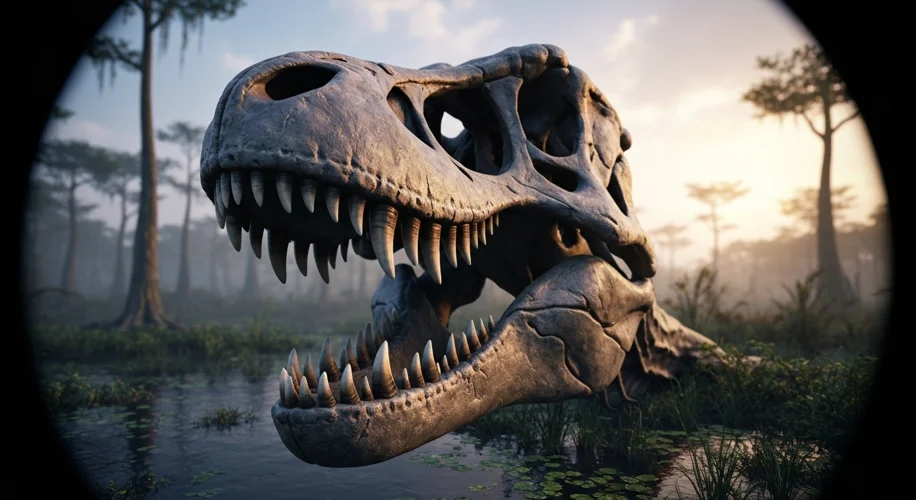Imagine a world not so different from our own, yet painted with the vibrant, terrifying hues of the Late Cretaceous period. Dinosaurs ruled, and among them, the dromaeosaurids – more commonly known as raptors – were the apex predators. We picture them as sleek, feathered hunters, famously armed with a deadly sickle claw. But what if our image of these fearsome creatures, particularly the iconic Velociraptor and its close kin, is incomplete? What if some of them were built for a very different kind of hunt, one that utilized a weapon we’ve largely overlooked?
For decades, the dromaeosaurid family tree has been a subject of intense study, with discoveries constantly refining our understanding of their anatomy and behavior. We’ve learned they were feathered, swift, and intelligent. Yet, the hands of these creatures, while possessing sharp claws, have often been depicted as secondary tools, perhaps for grasping prey or stabilizing kills. That is, until a remarkable fossil find began to rewrite the script.
Deep within the fossil-rich badlands, paleontologists unearthed the remains of a previously unknown dromaeosaurid. This specimen, however, presented an immediate puzzle: its forelimbs were unlike anything seen before in its family. The bones of the hands, particularly the metacarpals and phalanges, were significantly more robust and powerfully built. The articulation points suggested an extraordinary range of motion and an immense capacity for gripping. It wasn’t just strong; it was uniquely strong, hinting at a specialized function that went beyond mere grasping.

This discovery immediately sparked debate. What kind of prey would require such formidable hand strength in a raptor? Standard dromaeosaurid hunting likely involved swift strikes, pinning with the sickle claw, and tearing with sharp teeth. But these powerful hands? They suggested a more direct, forceful interaction. The researchers theorized that this new raptor species might have specialized in tackling larger, more agile, or perhaps even armored prey. Imagine a creature with the intelligence and speed of Velociraptor, but with hands capable of latching onto prey with crushing force, possibly even immobilizing struggling animals by sheer grip strength.
This hypothesis paints a vivid picture: a raptor not just relying on a quick bite or a slashing claw, but on a powerful, sustained hold. Perhaps it targeted smaller, fast-moving dinosaurs, using its powerful hands to snatch them out of the air or off the ground with incredible force. Or maybe it specialized in arboreal prey, using its strong grip to pull down struggling creatures from trees. The implications are profound. It suggests a greater diversity of predatory strategies within the dromaeosaurid lineage than previously assumed.

The analysis of the fossil’s muscle attachment points further supported the idea of specialized, powerful forelimb use. These areas were more pronounced, indicating larger and stronger muscles capable of generating significant torque and grip strength. This wasn’t a hand built for delicate manipulation; it was a tool of raw power.
This discovery challenges the established narrative of raptor predation. It forces us to reconsider how these animals interacted with their environment and their prey. The

